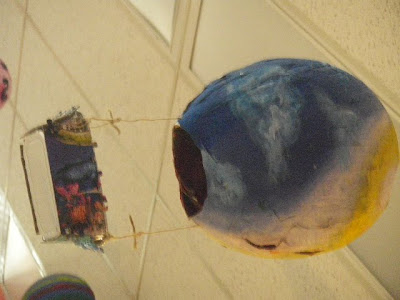Buoyancy: Puzzle Project!


The puzzle collaborative project we had was with the concept of staying afloat (open experiences with learning). The concept came pretty quickly and we decided to create an installation. Alot of the people were kinda upset when they found out that they had to use their puzzle and dismantle it for this project. Other than that I thought it went fairly well.
First off I would like to say that I've never done paper mache in my life and I thought it was pretty cool that we got to do that. Working with everyone on the paper mache was fairly fun and messy. During this time,
 everything was pretty casual.
everything was pretty casual.Painting the balloons was pretty fun too. The balloon was a metaphor for children as learners and we had to paint the balloon in a way that represented our ideas about that. For my balloon I decided to paint the sky. The sky is never the same everyday. The sky is an ever evolving entity filled with a variety of things. Sometimes it's dark and filled with stars, sometimes is azure filled with clouds, sometimes it's during sunrises or sunset. I felt that the sky was an appropriate metaphor because every child is different. They have different developmental stages, different ways they view things, different conditions for them to learn, and deffinitely different interests. This was a good metaphor in terms of holistic learning.
During the Installation set up, we had a fairly good system where some people painted while a few others worked on setting up the "country of childhood." Also the people in the other room putting up the balloons did an amazing job. This was definitely a really cool installation!












